Art Fairs
As Artissima Turns Up the Volume on Sound Art, 9 Collectors Tell Us What Makes the Turin Fair Stand Out From the Crowd
We asked a cross-section of collectors for their highlights of the fair where curators set the tone.
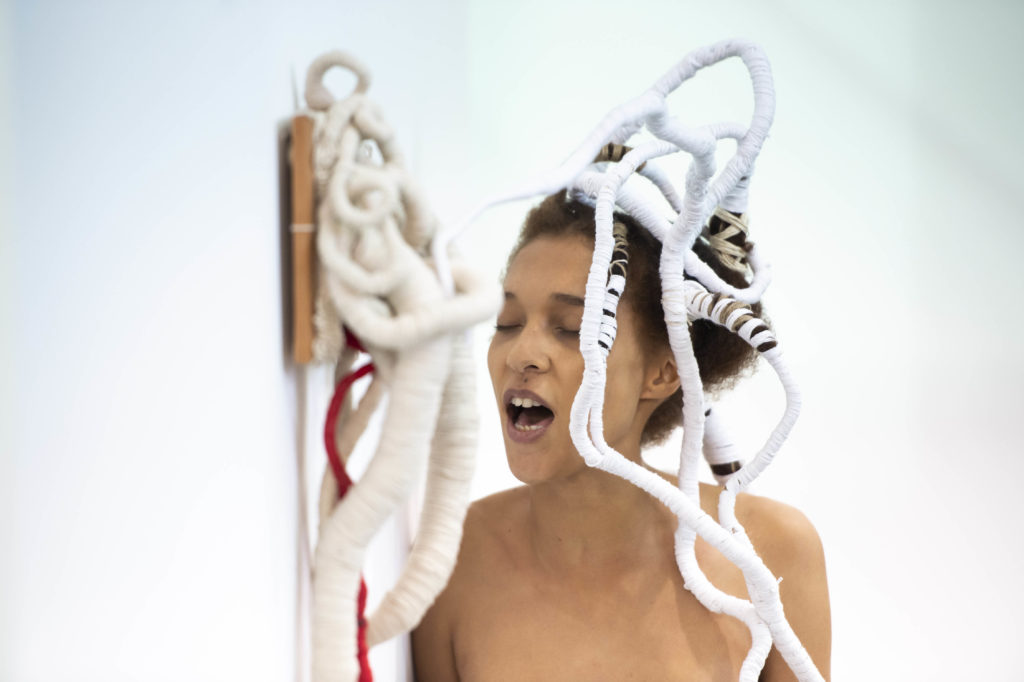
We asked a cross-section of collectors for their highlights of the fair where curators set the tone.

Naomi Rea

Fall is a busy season for art fairs in Europe, but Turin’s Artissima comes with a local delicacy that is missing at other fairs. You won’t find truffles on the menu at Frieze in London or FIAC in Paris.
Collectors hoping to sniff out new discoveries should have no problems at the fair, which for the second year is in the capable hands of director Ilaria Bonacossa. The director was feeling energetic and excited on preview day on Thursday, which saw a number of VIP collectors in attendance despite the fair falling this year on a holiday weekend.
Some 195 galleries from 35 countries have flocked to the city at the foot of the Alps to take part in Artissima this year, which opens to the public today and runs through Sunday.
Last year, Bonacossa introduced a well-received curated section for drawing, and for the fair’s 25th birthday she has kept up momentum by expanding the fair off-site with a section devoted to sound works. Some 15 sound installations, curated by Yann Chateigné Tytelman and Nicola Ricciardi, are on view in the magnificent setting of the newly renovated former train repair workshop, the OGR—Officine Grandi Riparazioni of Torino. (Ricciardi is the OGR’s artistic director.) Bonacossa tells us the extra venue was necessary: “Can you imagine having all these sound works in the fair? It would be impossible to hear.”
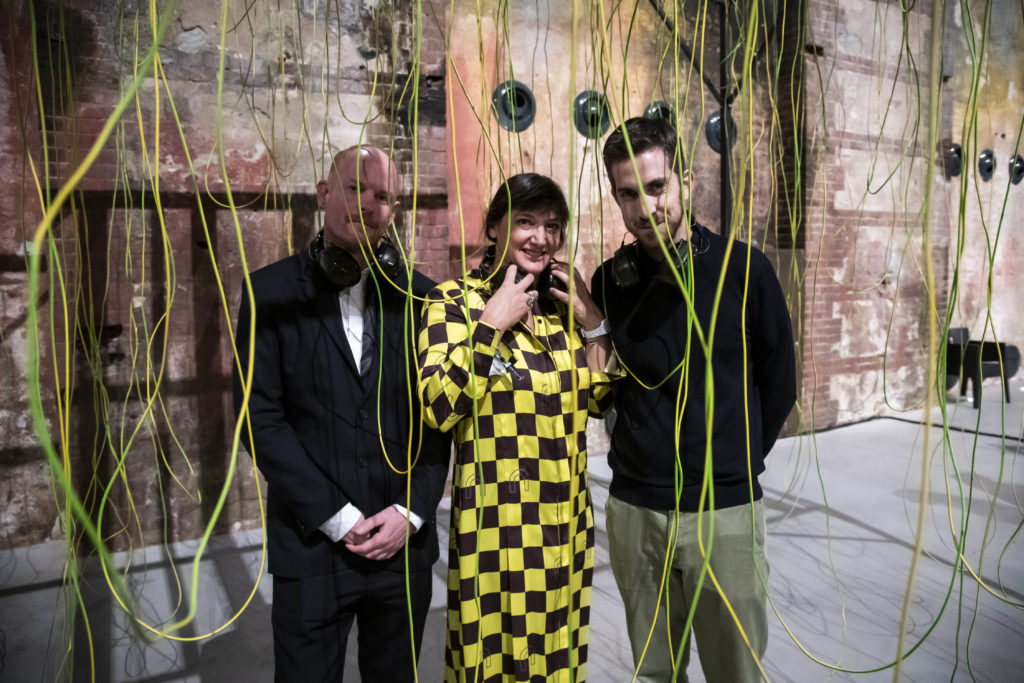
Yann Chateigné Tytelman, Ilaria Bonacossa, Nicola Ricciardi. Photo by Perottino – Piva – Bottallo / Artissima 2018.
The edgy new section fits the fair that has always drawn in collectors, art world professionals, and art lovers for its focus on experimental practice and up-and-coming galleries and artists. Artissima also stands apart for its more curated feel, with four of the eight sections (devoted to emerging art, “rediscoveries,” drawing, and sound) being curated by teams of international curators and directors. The remaining four sections are selected by the fair’s committee.
The fair has a generous €300,000 (around $314,000) budget for acquisitions by Turin’s museums. The selection committee, which includes former Tate director Nicholas Serota and the director of Madrid’s Reina Sofia, Manolo Borja-Villel, as well as veteran Dutch curator Rudi Fuchs, chose 16 works. Castello di Rivoli, Museo d’Arte Contemporanea, acquired Tomás Saraceno’s Radio Galena (2018), a sculptural work that comes with its own transmitter, presented by Pinksummer Gallery, and GAM (Galleria Civica d’Arte Moderna e Contemporanea di Torino) now boasts video pieces by Doug Aitken, Rosa Barba, and Nathalie Djuberg.
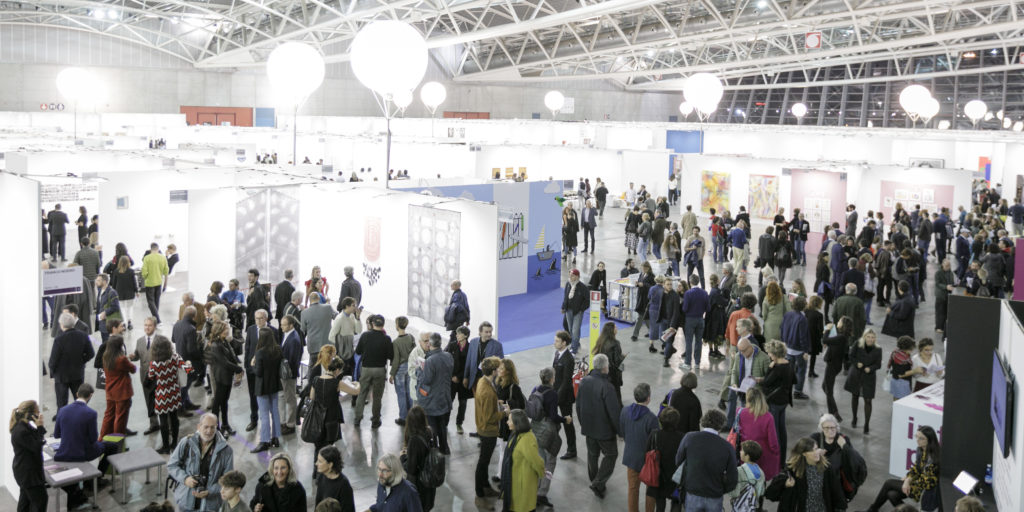
Photo by Perottino – Piva – Bottallo / Artissima 2018.
Sales at the fair were generally made at a slower, more Italian pace than the brisk Frieze in London or Art Basel. That said, highlights from the preview include Parisian Galerie Jocelyn Wolff selling a triptych on paper by Miriam Cahn, was mich anschant (1995), for €20,000 ($22,800) to a Northern European collection. Elsewhere, Galleria Continua sold a 2016 work by the Argentinian artist Jorge Macchi for €30,000 ($34,136) and the Brazilian artist Jonathas de Andrade’s Pigmentation, by Avelar – from the project Me, mestizo (2017) for $40,000. The Turin-based Giorgio Persano gallery sold a work by Portuguese artist Pedrito Cabrita Reis, Painting #36 (2016) for €60,000 ($68,000) along with a 1973 work by the late Swiss artist Michael Bieberstein for €35,000 ($39,800), and Bologna’s P420 sold four works by Helene Appel, John Coplans, Paolo Icaro, and Stephen Rosenthal for a combined €98,500 ($112,000).
Despite the busy season and the relatively modest price points of the fair, Artissima never fails to attract high-caliber collectors. More than 50,000 visitors are expected to attend the fair over its four-day run. We buttonholed some of them on the fair’s preview day to get a sense of what makes Artissima and Turin the attractive destination that it is.
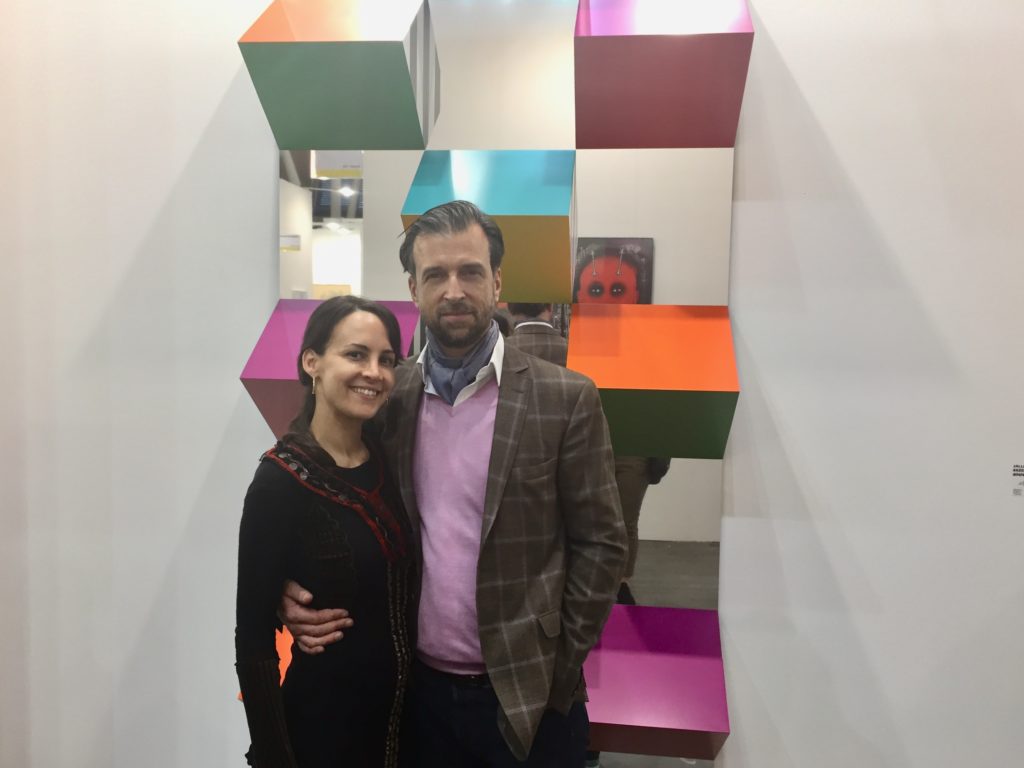
Eva Ruiz & Alain Servais. Photo by Naomi Rea.
Why do you make room for Artissima in your busy art fair calendar? Alain: There’s always an exception to any rule. Artissima is an exception in its functionality; it’s difficult to reach because the airport is further out of the city, there’s a tiny population, the roads are difficult to navigate and badly looked after, there’s a big question mark. But we come because of the quality of the people and the amazing collectors from all over the world who come here. There was an amazing group of Turkish collectors from the SAHA Association, and people come from Indonesia, China, Brazil… Pedro Barbosa is here, for example. It’s quite astounding. There’s a little tribe of collectors that’s getting smaller and smaller who like quality and curated art, and Artissima is being really smart about tapping into that niche. Every gallery has a curated booth, they’re not interested in just putting up paintings and selling them like luxury objects.
Eva: It’s the closest thing to visiting a biennale. The galleries are taking care about the artworks. The speed is different here. I agree with Alain, it’s a more curatorial fair. Galleries know they can bring pieces that are non-commercial because here there are passionate collectors, from all around the world, from Lima, Peru, for example, and there’s a hunger for well-digested, curated, challenging work. All the curators are daring to bring what they would to biennials. It’s great when curators come into the commercial side of things because they have an institutional approach and the work is kind of pre-vetted for you.
Alain: If you take the brochure and count the number of curators in the fair, when was the last time you saw so many curators involved in a fair and being paid for it? They’re involved in selecting for the sections but also the prizes. The insider key is that the fair is using its marketing budget on inviting core-level curators instead of advertising. The collectors that we like are the ones that love art and not just the luxury branding of a fair. The work speaks for itself, it’s not like selling new “boots”, there’s time and energy that has gone into curating.
Have you bought anything yet?
Alain: Not yet. As collectors we are less impulsive and more thought out. For me the test the work has got to pass is this: When I go home, did I go to sleep thinking about it? Did I miss it? Artworks are like girlfriends, in that sense. Anyway, here in Turin there is less competition, less pressure than other fairs, and it’s by definition a slower crowd.
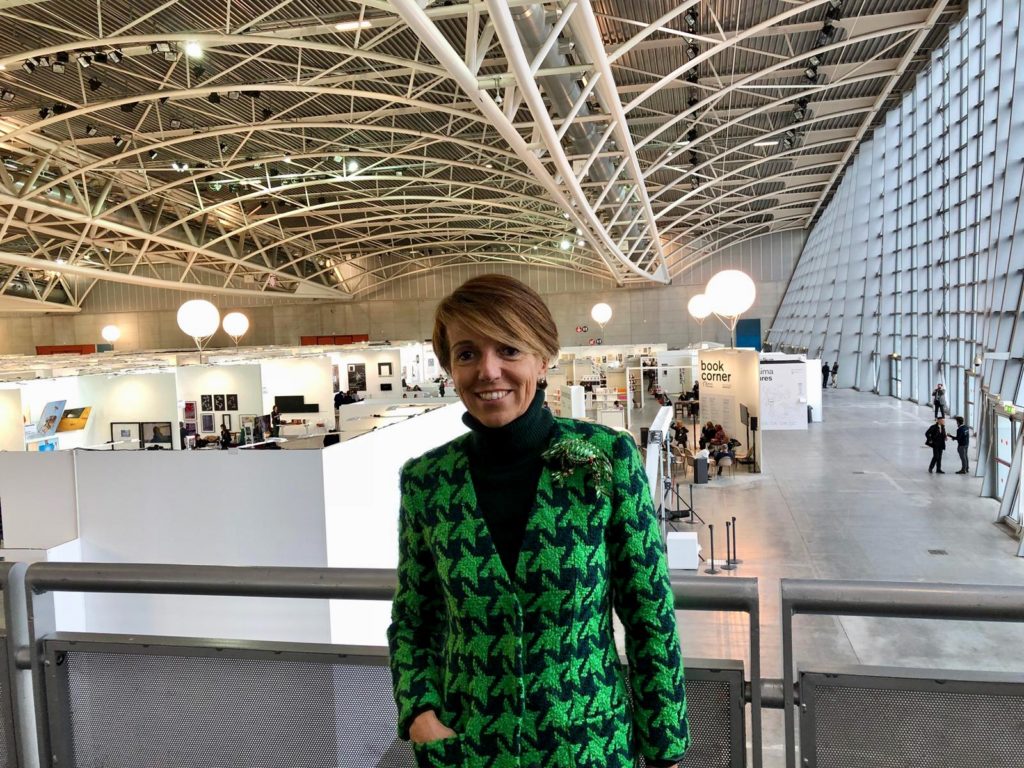
Patrizia Sandretto Re Rebaudengo. Photo by Naomi Rea.
How do you approach the fair in your home city differently to others? What’s different about Turin is my role in the city with the Fondazione [Sandretto Re Rebaudengo], so I actually spend much more time outside the fair with groups of collectors and museum directors. For example tomorrow morning we are receiving the Global Private Museum Network and then the International Council of the Tate at the Fondazione. So sometimes for me it’s much more difficult to see as much of the fair in Turin as I do in Frieze, or in FIAC or in Basel or wherever else, when I have much more time. So I do my first rounds today and then I can’t come back to the fair until Sunday when I can spend the whole day catching up on what I didn’t manage to see today. Many of the galleries that know the collectors send a pdf beforehand in an email in which you can already see what is on sale on the fair. But it’s also so important to come and to see the work in the fair because I like to be surprised.
What have been some of your highlights so far? In the “Back to the Future” section there are some fantastic works. As always it’s a very interesting section, because it’s not only showing artists who are older or have already passed away. You really discover artists that you didn’t know, that you’d never heard about. In Viasaterna there is Guido Guidi, who is a photographer that I bought some years ago and I’m so happy to see his work again.
It’s also important to see “Present Future”, because there you can really discover, and in this case, MLZ ART DEP is a very interesting gallery showing what I think is a fantastic piece by The Cool Couple. Then, for example, I enjoyed seeing Marta Cervera, which is a gallery from Madrid, showing Ludovica Carbotta, who is an Italian artist from Turin, whom we had an exhibition with in the past. Desegni [Drawing] is also a very good section, Massimo de Carlo is showing Diego Perrone, there are drawings from Tony Cragg at Tucci Russo, but I’m also excited about the drawings of Raymond Pettibon [In Arco, Turin] from just the right period of 1988-89.
Why do you think so many collectors are drawn to Artissima? I really believe in Ilaria, the director. She worked in my foundation for 10 years and did a great job. And she has a fantastic team—all women. As a fair it’s really easy to visit. It’s designed so well that you really can see it all, the booth spaces are big and not very divided, and all the works are very well installed. Overall it’s a fair that can really give you a good idea of what the situation is in Italy, but it’s also got quite a good mix of international galleries. And there are works for everyone. You can buy something for around €6,000 to €8,000 so young collectors can start to collect, but then there are also works for €300,000.
You’ve been coming since the first edition, all 25 years? All 25 years. When it started it was a small private fair and now it is public and belongs to the city. But what I can always say of the fair, because it’s changed venues and owners over the years, is that it has always paid a lot of attention to young artists, to whatever is new, and fresh.
Are you buying anything from the fair? Yes, I will shop—I will buy for the Fondazione. I already saw some pieces that I’m interested in. But for me, in a fair, it’s important to buy but also to meet new artists and to get involved, because what we try to do with our foundation generally is work with the artists to produce work, so the fair is an occasion to get to know the artists. Generally artists don’t go so much to the fair, but what I was impressed with this morning was that I saw so many artists visiting the fair.
Is there anything missing? What I can see is there are not many videos, and there seems to be less photography. At least in the part I’ve been in so far. I’m curious to see the sound section in the OGR because it’s really new for a fair. It’s interesting that they’ve opened it up to some things that are harder to sell.

Thierry Forien. Photo by Naomi Rea.
Where are you from? Paris
Is this your first time at Artissima? Yes, it’s my first time.
Why did you decide to come? Well, I was invited. And I decided to come because of the quality of the fair. I like the curated sections, that the booths are very open and readable. There are not too many artists, there’s been a clear curatorial choice so it’s still very readable. Besides, everything in Italy is beautiful.
What have you liked so far? I like that it is easier to speak to the gallerists, and that there are artists to speak to.
How does it compare to other fairs? Well, a lot of fairs around are too big. Like FIAC is a big industry fair… Artissima is all right in size, not too small…, and the quality is very good.
Is there anything you are thinking about buying yet? I was interested in work at the French gallery Papillon in the Back to the Future section, Erik Dietman, and work by Christian Fogarolli at the Italian gallery Alberta Pane.
Do you have a particular strategy for the fair? I don’t know in advance of the fair what I want. I speak with the gallery and very much the artist. It’s very important to me when buying contemporary art that I know the artist. I don’t want someone getting between me and the artist and trying to control everything, and speaking to the artist always brings a lot to me. Usually when I buy, I buy later on. I’m not the kind of person who competes to get the prize. If I end up missing something, I don’t mind.
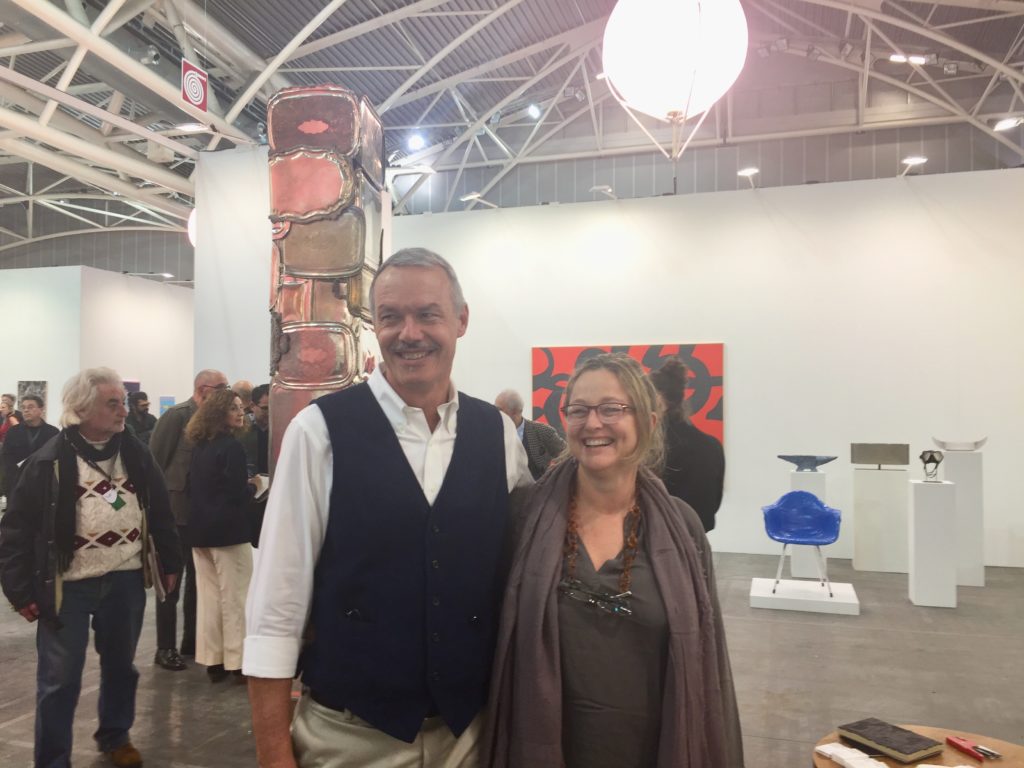
Antonella & Giovanni Dionesio. Photo by Naomi Rea.
Where are you from? We’re based in Turin. We are very proud of Turin for Artissima, especially when it’s not an easy moment for the city.
Why Artissima? [It] is a special fair for the young and not established.
What do you like about it? I like meeting the artists and gallerists who are not afraid to let us stay alone with the work. There aren’t so many people here that it’s overwhelming.
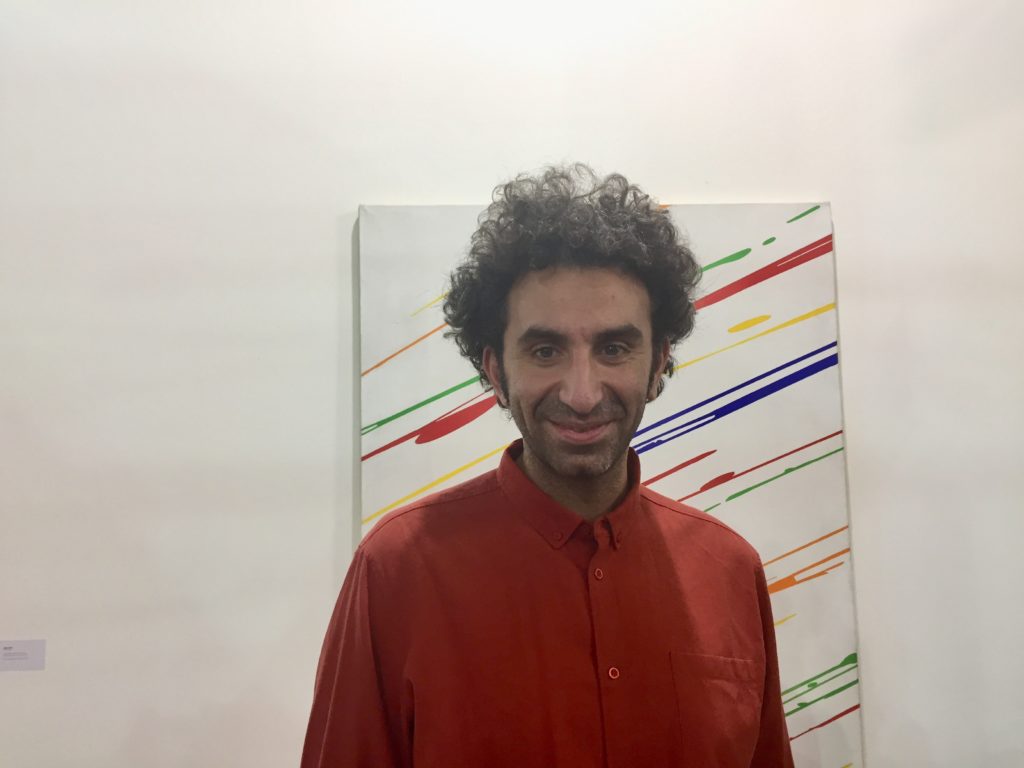
Fabio Giglio. Photo by Naomi Rea.
Where are you from? I live in Milan.
Do you go to many art fairs? I go to Miart because it’s in Milan and I try to come here.
Why have you come to Artissima today? Because I love art and I have many friends who love art, and have galleries. I always try to come to Turin even if just for one day because it is such a nice place to be. I just enjoy the city, see some nice art, meet nice people and friends.
Have there been any standout presentations for you? Loom gallery from Milan has some very interesting new pieces.
What sort of work do you collect? I own pieces by the Italian artist Lucio del Pezzo and Stangl.
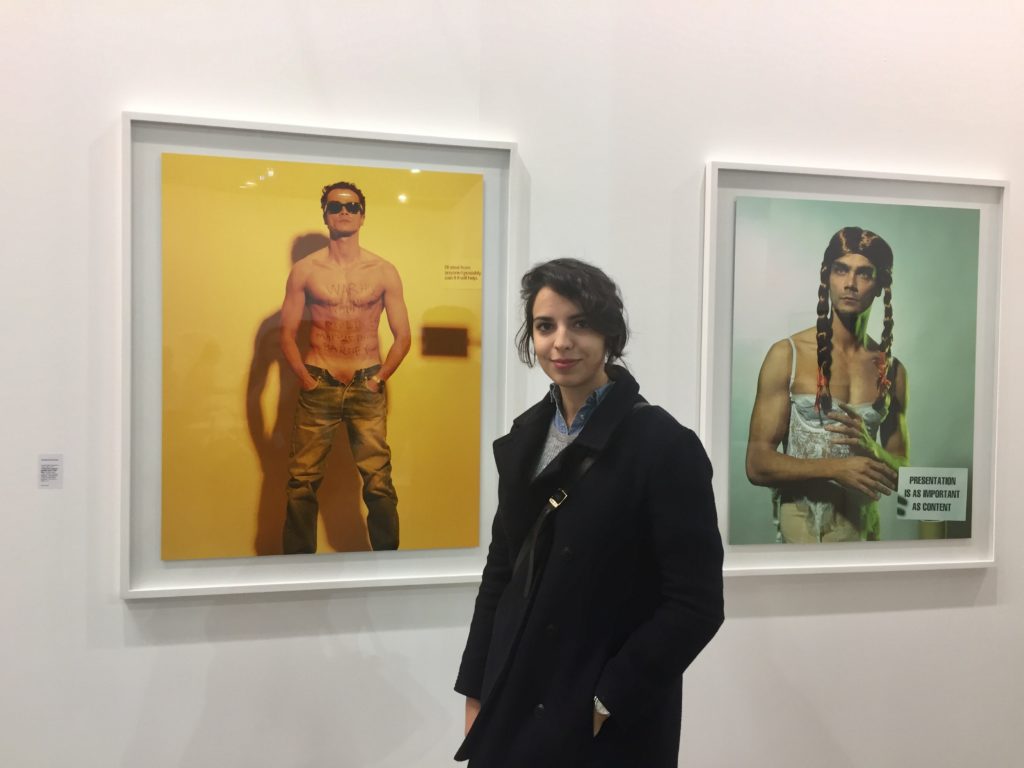
Greta Vignali. Photo by Naomi Rea.
Where are you from? I’m from Turin originally but I study in Milan. I came back this weekend specifically to visit Artissima.
Why? I like art, I really like contemporary art and I’m really interested in learning more about it. I studied economics and management for art and now am doing my masters in marketing.
How do you feel about the fair? I like it a lot, but I wish there were more explanations on the walls. It’s great to see all this art, but there’s not really a process of learning that goes on. Turin is really a hub for contemporary art. It wasn’t always like this, in past years it was all about industry, and FIAT, but after 2006 it became more focused on art and cultural activities.
Would you like to collect art? If I become rich, yes!
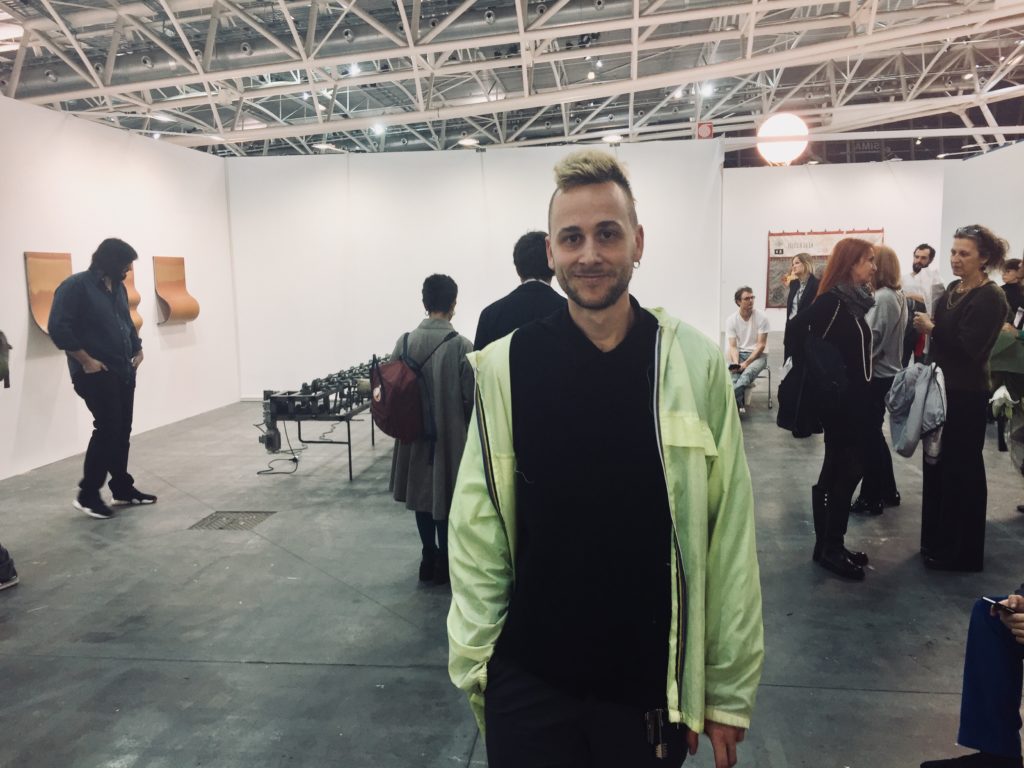
Davide Zgambaro. Photo by Naomi Rea.
Where are you from? I’m from Padua but I live in Turin. I’m an artist.
Why did you come to Artissima? I came last year, it’s one of the bigger fairs in Italy and there’s really a space for the young contemporary artists. It’s a place to come to meet friends, socialize, and look for galleries that work with young artists because it is difficult to find support in this city. Turin is more underground but there are a lot of artists here because it’s cheaper to live here, and there is a lot of studio space.
Do you go to other art fairs? How do they compare? I go to Miart in Milan and also to ArtVerona, as far as Italian fairs go. Abroad I’ve pretty much only seen the mother of all fairs, Art Basel. They’re all useful in their own ways because it is hard to meet collectors and galleries out in the wild.
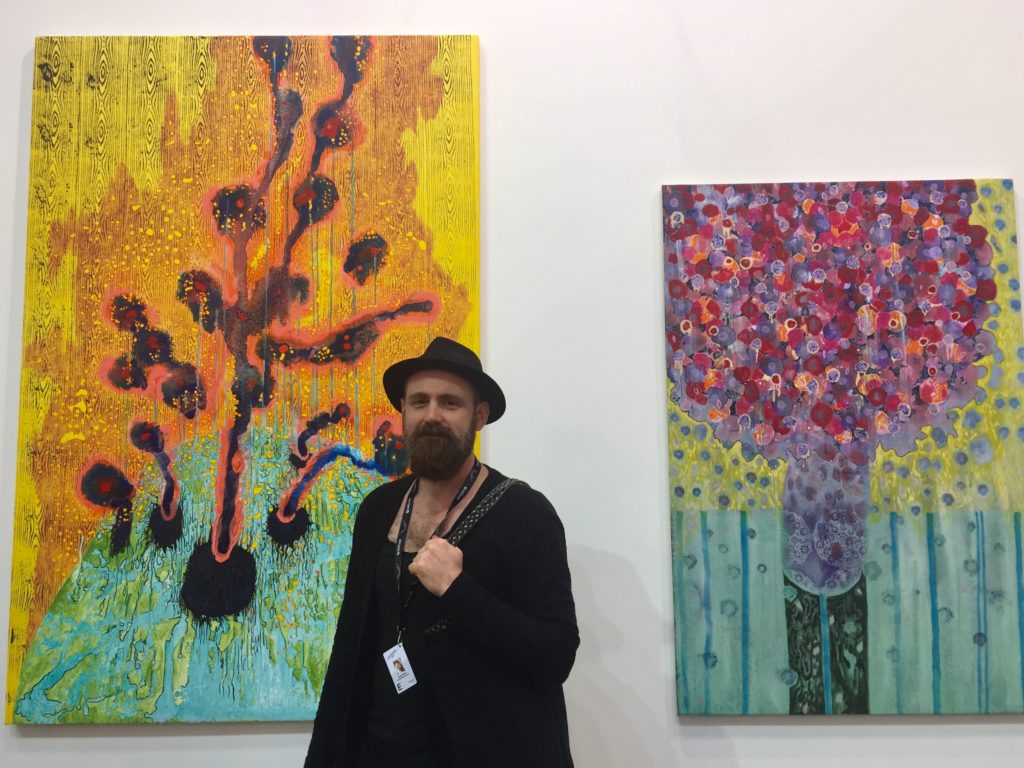
Jared Deery. Photo by Naomi Rea.
What do you do? I’m an artist based in New York.
What brings you to Artissima? I’m showing work at the fair [at Boccanera in the Dialogue section]. Also, to see Turin and the rest of the fair. I have a solo show at the Boccanera gallery in Trento after this.
What do you like about it compared with other fairs? It’s very international but more low-key, which makes it very welcoming and inviting. Often fairs can feel intimidating but the size of Artissima is more inviting. It’s international but not too much, it’s still very Eurocentric, a lot of people know each other pretty well. The market is kind of second tier, there’s no huge galleries like Gagosian, but there are lots of collectors showing interest. It’s also a good time to connect with my Italian collector base.
What do you notice about the collectors? The collectors here want to live with the work, which I like. They talk about where they’re going to put it in the house, which is great for me as an artist because I want people to live with my work, I prefer it when people want to live with it rather than put it in storage.
Do you also collect work? I own some pieces that I have traded with other artists. At fairs you meet a lot of artists, just today I met four or five who I’ll follow up with later. The nice thing about fairs is that they’re built on that World Fair model, which lends itself really well to making connections.
When you say trading with other artists, do you mean swapping works? Yes, people won’t really tell you this but that’s kind of artists’ retirement plan.
Artissima, 1 November through 4 November, Oval Lingotto Fiere and OGR, Turin, Italy.